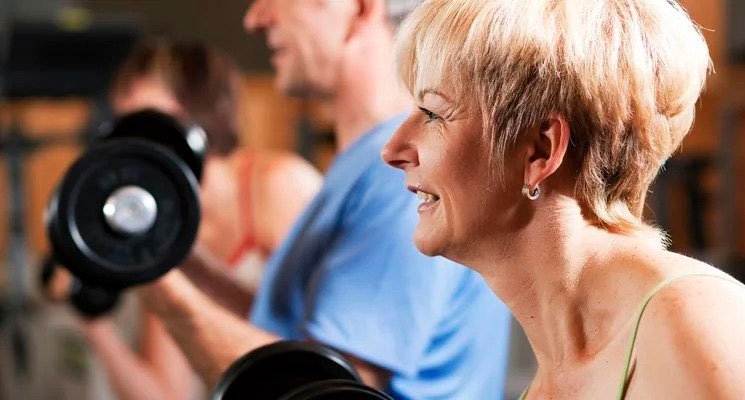When my father went for his routine checkup with his doctor, he was sent straight to the hospital for a triple-bypass operation. Needless to say, my family started focusing hard on getting him to exercise. We found a weekly cardio class for him at the senior center in his small town, but it wasn’t enough. He felt uncomfortable and self-conscious in that setting — too exposed to the non-exercising seniors — and he didn’t like the routine of the one class that was offered. When the instructor began poking fun at him for being the only man there, he quit on the spot-and while my family all understood- we didn’t want him to quit exercising altogether.
So we sent him for a trial session at a local gym. He took one look at the young, pumped-up clientele and turned tail. It was intimidating and overwhelming for him to think of learning, or re-learning, how to exercise among such a crowd.
What did my father need?
What he really needed was a senior center that incorporated a fitness facility focused particularly on the needs of an older adult population. We found this harder to locate than we thought would be the case. There were many senior centers in the towns surrounding his, but few of them incorporated adequate exercise facilities. They either offered meager pieces of machinery that seemed older than the population they served, or classes that attempted to be one-size-fits-all for a community that was really quite diverse.
This, it turns out, is a common problem: As a recent article in Athletic Business magazine states, “One of the greatest misunderstandings about senior centers is that they serve one generation. In fact, as currently configured, senior centers target members of the so-called Silent Generation, Depression-era babies who are now between 69 and 89; the remaining members of the Greatest Generation, the youngest of whom are now 90; and increasingly, the Baby Boomers, who are now in the range of 50 to 68 years old.” None of the offerings at the places we checked out seemed to fully target my father’s generation.
Eventually, we found a gym that isn’t perfect for him, but is a good enough fit. It has a special “Senior Room,” where older adults in particular are invited to gather for classes — and one of those classes is particularly for men in their seventies who were recovering from heart surgery. That kind of specificity is rare and welcoming. A corner of the room, overseen by trainers who specialize in older adult fitness, is equipped with free weights and cardio machines that allow my father to undertake the independent, free-weight sessions he likes best, but without the pressure of younger adults killing it on their reps all around him. He still wishes he had access to a center that would cater solely to the needs of older adults like him, but he’s making it work. Maybe eventually we’ll find a place for him like The Summit, located in Grand Prairie, Texas.
The Summit was “specifically designed for active adults ages 50 or older.” It operates on the principle that senior centers should serve all seniors, whether they’re in their 50s or their 90s. It strives to incorporate spaces for socializing, but to keep those spaces separate from the workout areas. For now, we’ll settle for the fitness centers that consciously create spaces for seniors.
Maybe it’s time to consider how your own facility might better serve an older adult population. How can you create a space just for them? How can you cater to the varying needs of the many different generations who make up “older adults”? How can you design a program that benefits both that sizable population and your own facility? Do you currently have a health club management software that utilizes senior discount programs like Silver Sneakers? My father will thank you if you figure out good answers to such questions.
